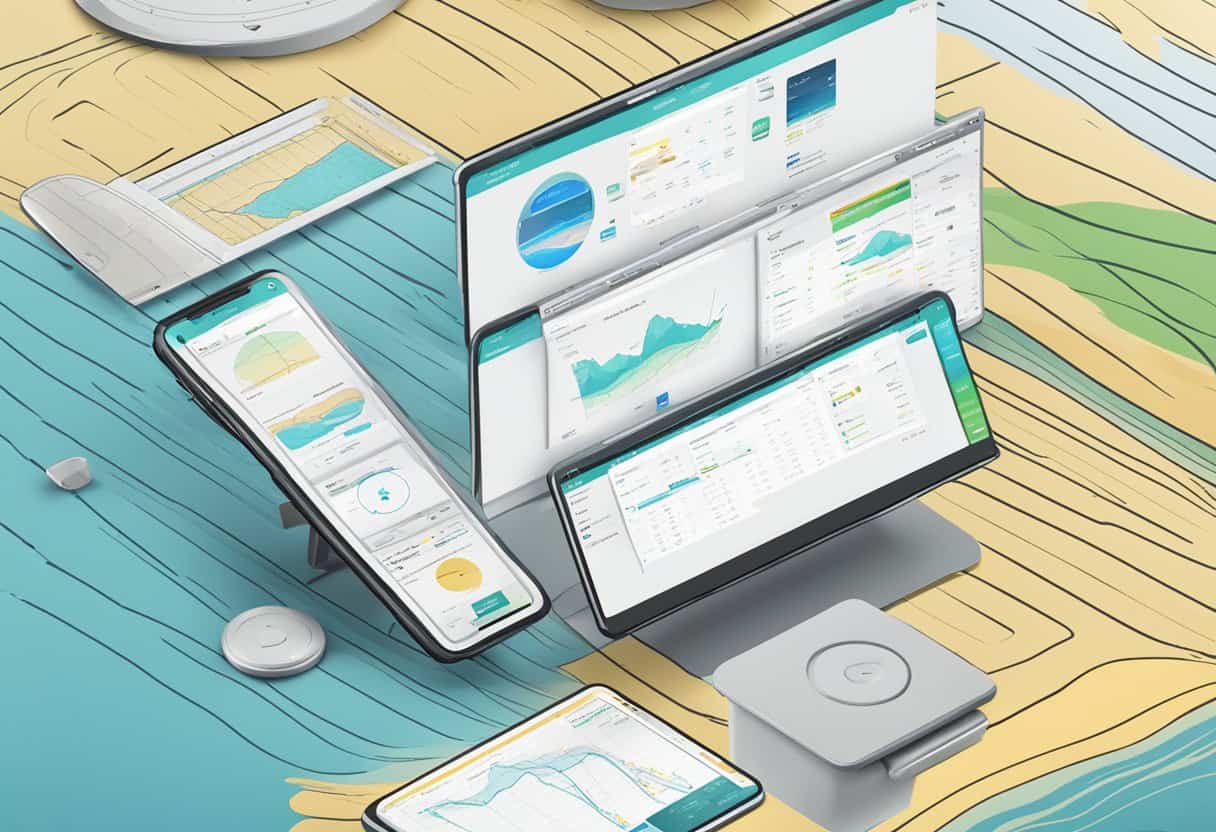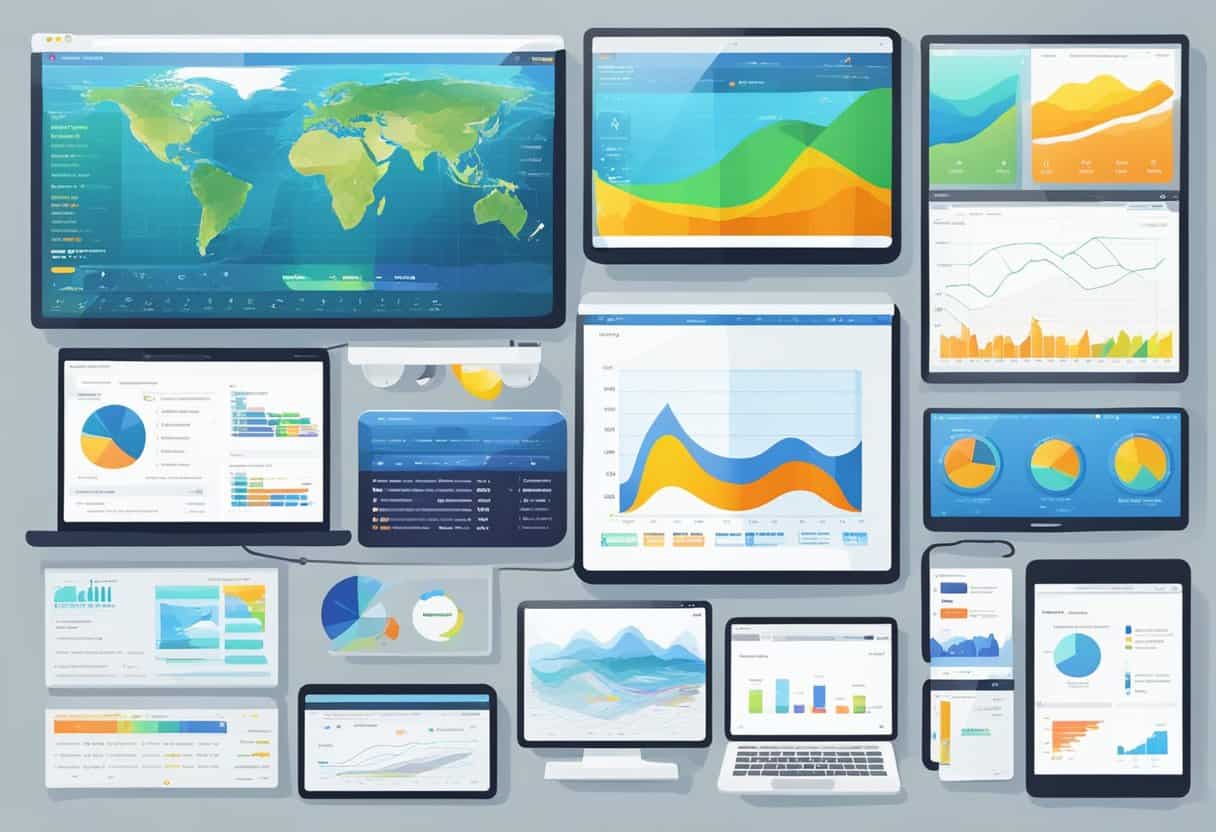Selecting the best surf forecasting websites and apps is crucial for any surfer looking to catch the perfect wave.
These tools provide valuable information on surf conditions, which can make the difference between an exhilarating day on the water and a disappointing one. With advancements in technology, surf forecasting platforms have become increasingly sophisticated, offering a variety of data including wave heights, wind direction, tide schedules, and more. It’s essential to understand the significance of this data and how it can influence your surfing sessions.
While many surf forecasting tools are available, not all are created equal. Each website and app has its own set of features, ranging from basic surf reports to advanced forecasting models. These digital tools not only offer real-time data but also help in planning future surf trips. User experience plays a significant role as well; having an intuitive interface and additional features like alerts, community forums, and personalized settings can enhance usability.
Surf forecasters aim to ensure that you spend less time searching for the right conditions and more time enjoying the waves.
Surf smarter, not harder! Ditch the paddling in blind and unlock perfect waves with top-notch forecasting tools. Apps like Surfline and Magicseaweed unveil real-time conditions, swell secrets, and wind whispers, while Windy paints vibrant weather maps for your next ride.
Exploring Top Surf Forecasting Platforms
Surf forecasting platforms are essential tools for surfers looking to make the most of their time in the water. These websites and apps provide detailed forecasts, surf reports, and additional insightful features that cater to the needs of the surfing community.
Features of Leading Surf Forecasting Websites
Leading surf forecasting websites offer an array of features to help you catch the perfect wave. Surfline.com, for instance, offers real-time surf reports and surf cams that span the globe. You’ll find high-resolution images and live video feeds, useful for observing current wave conditions before you head out. They also provide detailed tide charts, water temperatures, and wind forecasts.
Another top contender is Magicseaweed.com, widely regarded for its accurate surf forecasts and advanced swell analysis tools. The site’s interactive maps and user-friendly graphics display swells, wind, and tide information, helping you to thoroughly understand the day’s conditions.
| Platform | Live Cams | Detailed Forecasts | Tide Charts | Wind Info | Swell Analysis |
|---|---|---|---|---|---|
| Surfline.com | ✓ | ✓ | ✓ | ✓ | ✓ |
| Magicseaweed.com | ✓ | ✓ | ✓ | ✓ | ✓ |
Comparing Surf Apps for Optimal Usage
When considering surf apps for optimal usage, you’re often looking at portability and convenience. Apps like Windguru.cz, Windfinder.com, and Windy.com are popular among surfers for their detailed wind forecasts which are crucial for predicting wave quality.
For instance, Windfinder.com is valuable for its clear presentations of wind speed and direction data, essential in choosing the best location and time to surf. Windy.com stands out with its interactive maps that offer a more comprehensive visual representation of wind and weather patterns.
Meanwhile, Windguru.cz excels with customizable widgets that give forecasts at a glance, making it easy for you to access the surf conditions on the go. By comparing these apps, you can select the tool that best fits your preference for interface design, forecast specifics, and additional features such as social sharing or the ability to save favorite locations.
- Windfinder.com – Focus on wind speed/direction
- Windy.com – Interactive wind/weather maps
- Windguru.cz – Customizable forecast widgets
Each of these platforms has its place in your surfing routine, and by leveraging their individual strengths, you can make well-informed decisions for your surfing sessions.
Understanding Surf Forecasting Data
When you’re planning a surf session, understanding the data behind surf forecasting can significantly enhance your experience. It’s essential to grasp how wave predictions are made and how to interpret surf reports to make the most of your time on the water.
The Science Behind Wave Predictions
Surf forecasting relies on a combination of meteorological data and oceanographic algorithms. Weather stations and buoys collect real-time data related to wind speed and direction, swell period, and swell direction. The National Oceanic and Atmospheric Administration (NOAA) plays a crucial role in providing this data, which is then analyzed using sophisticated algorithms. These algorithms take into account historical patterns and immediate readings to forecast future wave conditions. Wave forecasts are projected by overlaying wind direction and swell information onto weather charts, providing a prediction of wave sizes and conditions.
- Swell Direction: Swell direction is the compass direction from which the swell is coming.
- Wind Speed and Direction: These factors determine the quality and shape of waves.
- Swell Period: The time between successive waves, which influences wave energy and surf quality.
Reading and Interpreting Surf Reports
Understanding how to read surf reports is pivotal for every surfer. Surf reports usually include:
- Swell Size: Typically measured in feet or meters.
- Tide Tables: High and low water times and heights, which can affect wave shapes and beach accessibility.
- Wind Forecast: Including both speed and direction, to indicate wave conditions.
Wind speed and direction are critically important; offshore winds tend to groom waves, making them cleaner and more favorable for surfing. On the other hand, onshore winds can make the surf choppy and less ideal. Tide tables should be consulted as the state of the tide can drastically change the quality of surf at a given spot. High tides might mean slower, fuller waves, while low tides might make for more hollow and quick-breaking waves.
Finally, swell period holds the key to understanding the energy behind the waves; longer periods often mean more powerful and well-formed waves, as swell has traveled from distant storms and has had time to organize itself. By interpreting these details, you can better choose your surf spots and times.
Advanced Features and User Experience

When selecting the best surf forecasting websites and apps, the breadth of advanced features and the overall user experience are paramount. These two aspects make a significant difference in tracking surf conditions, planning your travel, and enhancing your sessions whether you’re a beginner or an adept surfer.
Premium Offerings and Subscriptions
Premium subscriptions are a game-changer for surf forecast platforms, offering you ad-free browsing and unlimited time access to a suite of enhanced features. For instance, advanced swell tracking systems and model forecasts that utilize complex algorithms give you a more accurate understanding of upcoming conditions. Additionally, these subscriptions can provide access to historic forecast archives, allowing you to study patterns over time. This kind of data, including real-time ocean and weather predictions, is vital whether you’re hitting local shores or surfing spots across Australia or the USA.
Mobile App Integration and Accessibility
A well-integrated mobile app can significantly elevate your user experience. Enhanced iOS and Android apps offer benefits such as high-definition webcams and live wave buoy data to ensure you have the most current information at your fingertips. Another advantage is spot calibration options, which allow you to personalize forecasts for your frequent locations. For your convenience, you want to look for platforms that offer seamless integration across devices, keeping your preferences and data in sync whether you’re on your iOS or Android device or your desktop back home.
Making the Most of Surf Forecasting Tools
Leveraging surf forecasting tools effectively can transform your surfing experience. Knowledge of wave conditions, wind patterns, and water temperatures empowers you to choose the best times and locations for surfing.
Strategies for Different Types of Surfers
If you’re a dawn patrol surfer keen to ride the morning waves, websites such as Magicseaweed and Swellnet offer hourly forecasts and tide data essential for early sessions. As a windsurfer, platforms like Windguru can provide detailed wind forecasts to help you select the ideal spot with the most favorable winds.
Long-range surf forecasts are invaluable for surfers planning future trips. Consider using the weather research and forecasting (WRF) model provided by some services to understand upcoming patterns. Don’t overlook primary and secondary swell directions, wave height and direction, and cloud cover percentage, as these will give you a comprehensive outlook on your potential surfing conditions.
Planning Your Surfing Trips with Forecasts
To plan your surf trips with precision, use services that compile real-time wind measurements and offer accurate tide times. Sites that provide a graph-and-table-based service, like Windy, allow you to easily interpret complex data at a glance. Look for tools that supply unique maps and interactive, animated weather forecast visualization maps for an immersive forecasting experience.
Budget-conscious surfers should be aware of the price and whether services offer advertising-free browsing. Custom spot predictions and alerts for storm and pristine conditions are features worth investing in if you’re serious about finding the best waves.
Some platforms function as a progressive web app (PWA), convenient for on-the-go forecasts. Use these to access historic statistics and archives from your favorite water sports locations, aiding in the identification of patterns and ideal conditions over time. Remember to check the consistency of model mix accuracy, including both the ECMWF and WRF models, to ensure you’re getting the most reliable information.
Frequently Asked Questions
When you’re eager to ride the waves, accurate surf forecasts can make all the difference. This section answers your most pressing questions about surf forecasting apps and websites, ensuring that you hit the beach with the best information at your fingertips.
Which apps provide the most accurate wave forecasts for surfers?
For accurate wave forecasts, Surfline and Magic Seaweed are top contenders, offering real-time data and comprehensive analysis – making them indispensable tools for surfers.
What are the top free surfing apps available today?
Apps like Windy and MSW (Magic Seaweed) provide some of the best free surfing forecasts, boasting a mix of user-friendly interfaces and essential wave information without any cost.
What are the best surf forecast apps for iOS devices?
IOS device users often prefer Surfline for its detailed reports, while Magic Seaweed offers a robust option with its extensive wave and wind data tailored for surfers.
Are there any reliable surf forecast apps designed specifically for Android users?
Android users find Wave Forecast and Surfline to be reliable, with accurate surf predictions and user-friendly designs that cater to the Android experience.
Between Surfline and Magic Seaweed, which offers superior forecasting features?
While both apps offer comprehensive forecasting features, many users find Surfline’s feature set and live cam services to offer superior forecasting capabilities.
What websites are renowned for providing reliable surf condition predictions?
Renowned websites like Surfline and Magic Seaweed have long been held in high regard for providing some of the most dependable surf condition predictions available online.







